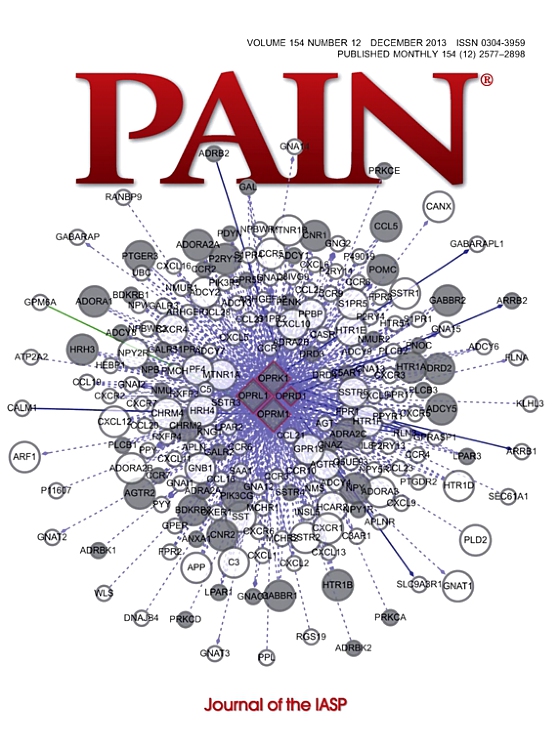新生儿疼痛的感觉、情感和认知方面所需的脑网络的差异成熟。
IF 5.9
1区 医学
Q1 ANESTHESIOLOGY
引用次数: 0
摘要
疼痛是多维的,包括感觉-辨别、情感-动机和认知-评价成分。尽管疼痛的概念是通过生活习得的,但编码这些不同维度疼痛所需的大脑网络何时以及如何发展尚不清楚。利用两个最大的可用的脑磁共振图像数据库——发展中的人类连接组计划和人类连接组计划——我们绘制了痛觉连接组的发育图——痛觉神经网络——在经后26至42周的婴儿中(PMA, n = 372),与成人(n = 98)进行比较。12个疼痛相关脑区成对组合的静息BOLD信号偏相关分析显示,与成人相比,32周PMA前的整体功能连通性明显较弱。然而,在接下来的几周内,疼痛连接组子网络出现了显著不同的发育轨迹。第一个在连接强度和比例上达到成人水平的子网络是感觉辨别子网络(PMA 34-36周),其次是情感动机子网络(PMA 36-38周),而认知评价子网络仍未达到成人水平。这项研究揭示了一种以前未知的基础设施早期发展模式,这种模式是编码疼痛体验的不同组成部分所必需的。与成人相比,新生儿大脑中成熟的疼痛处理所需的新生儿神经通路不完整,特别是关于疼痛的情感和评估方面。与年龄相关的快速变化表明,在这个发育时期,疼痛处理和疼痛体验发生了迅速的变化,即使在足月,也不太可能与成人相同。本文章由计算机程序翻译,如有差异,请以英文原文为准。
Differential maturation of the brain networks required for the sensory, emotional, and cognitive aspects of pain in human newborns.
Pain is multidimensional, including sensory-discriminative, affective-motivational, and cognitive-evaluative components. Although the concept of pain is learned through life, it is not known when and how the brain networks that are required to encode these different dimensions of pain develop. Using the 2 largest available databases of brain magnetic resonance images-the developing Human Connectome Project and the Human Connectome Project-we have mapped the development of the pain connectome-the neural network required for pain perception-in infants from 26 to 42 weeks of postmenstrual age (PMA, n = 372), compared with adults (n = 98). Partial correlation analysis of resting BOLD signal between pairwise combinations of 12 pain-related brain regions showed that overall functional connectivity is significantly weaker before 32 weeks PMA compared with adults. However, over the following weeks, significantly different developmental trajectories emerge across pain connectome subnetworks. The first subnetwork to reach adult levels in strength and proportion of connections is the sensory-discriminative subnetwork (34-36 weeks PMA), followed by the affective-motivational subnetwork (36-38 weeks PMA), while the cognitive-evaluative subnetwork has still not reached adult levels at term. This study reveals a previously unknown pattern of early development of the infrastructure necessary to encode different components of pain experience. Newborn neural pathways required for mature pain processing in the brain are incomplete in newborns compared with adults, particularly regarding the emotional and evaluative aspects of pain. The rapid age-related changes suggest that pain processing, and consequently pain experience, changes rapidly over this developmental period and unlikely to be the same as in adults, even at term.
求助全文
通过发布文献求助,成功后即可免费获取论文全文。
去求助
来源期刊

PAIN®
医学-临床神经学
CiteScore
12.50
自引率
8.10%
发文量
242
审稿时长
9 months
期刊介绍:
PAIN® is the official publication of the International Association for the Study of Pain and publishes original research on the nature,mechanisms and treatment of pain.PAIN® provides a forum for the dissemination of research in the basic and clinical sciences of multidisciplinary interest.
 求助内容:
求助内容: 应助结果提醒方式:
应助结果提醒方式:


